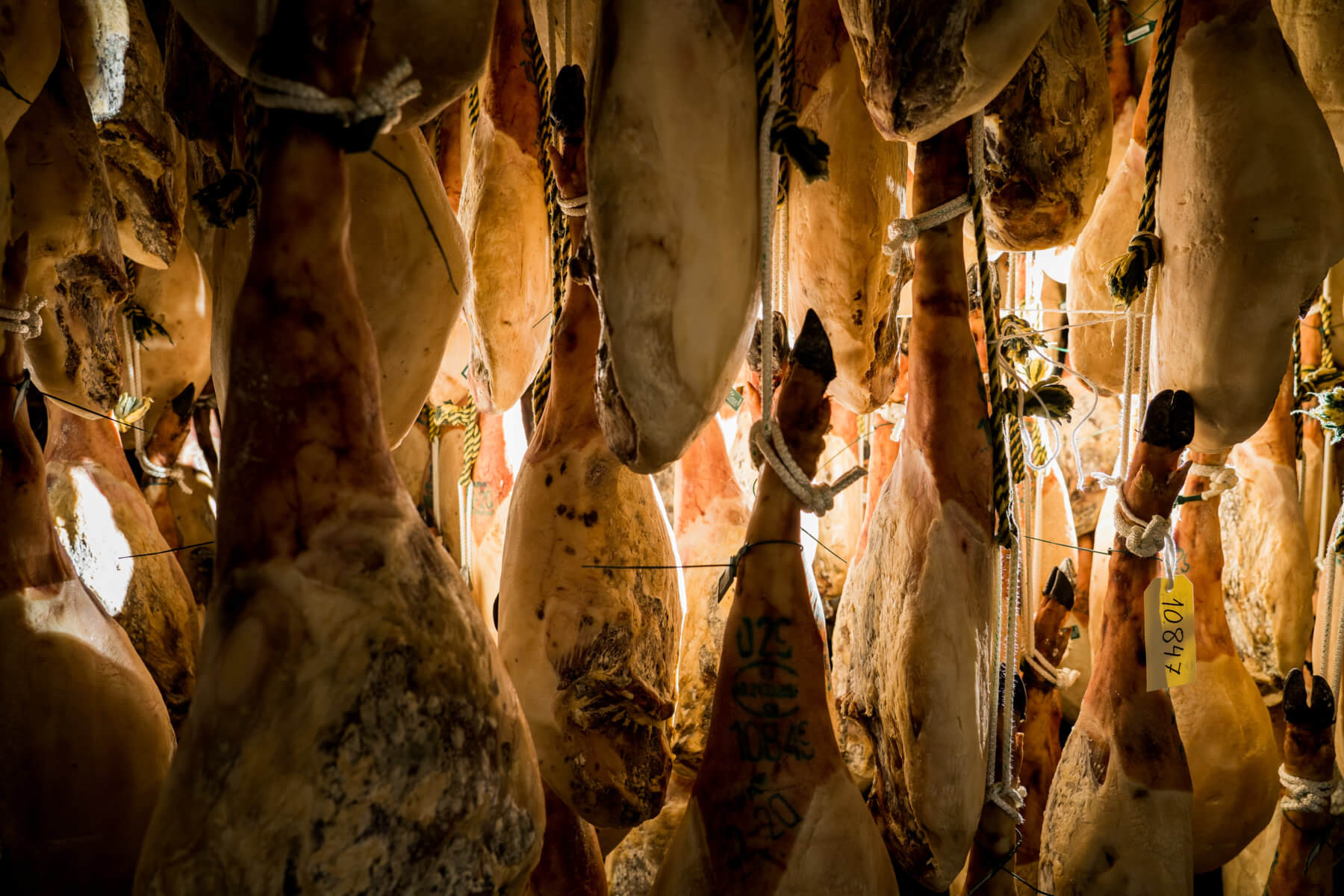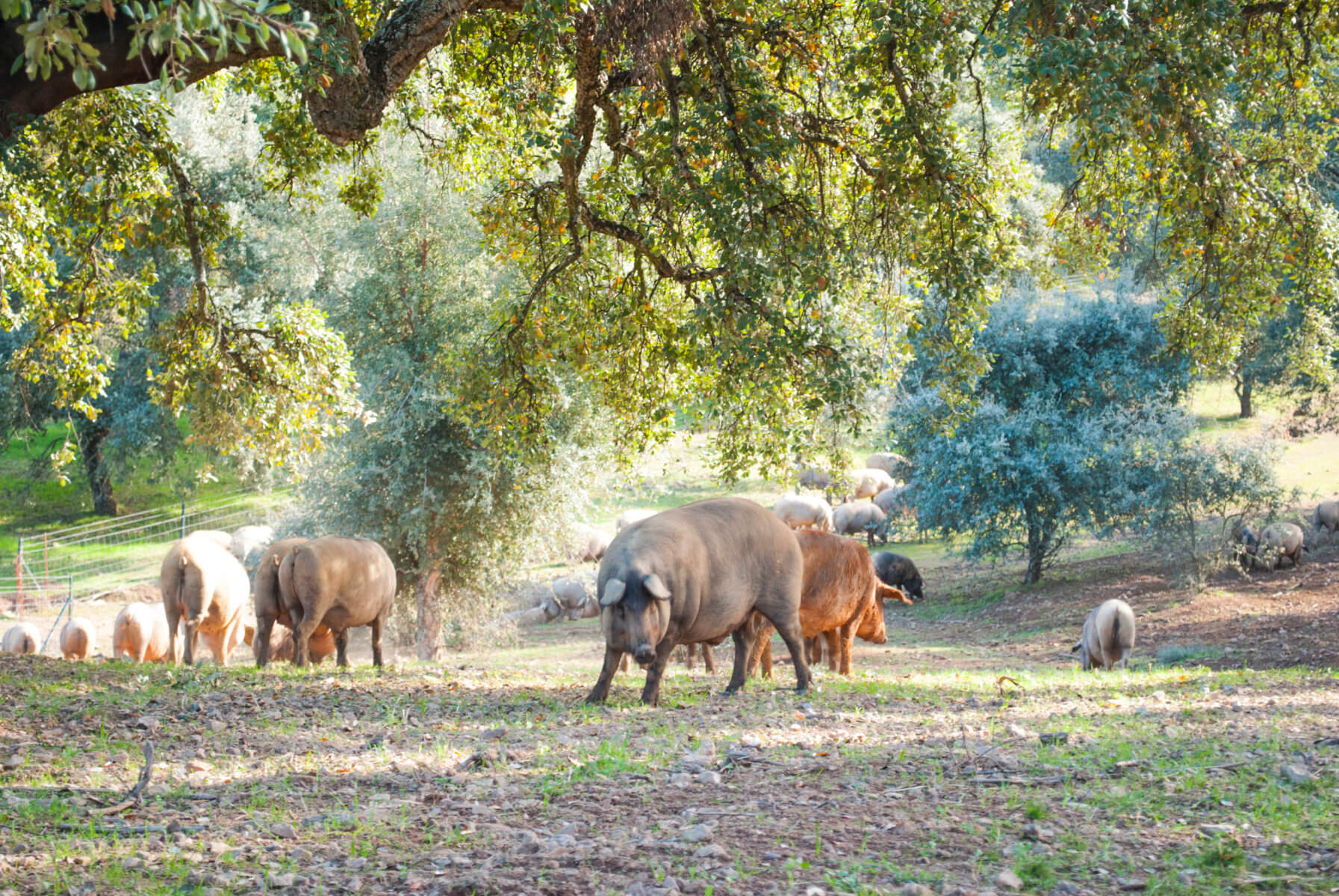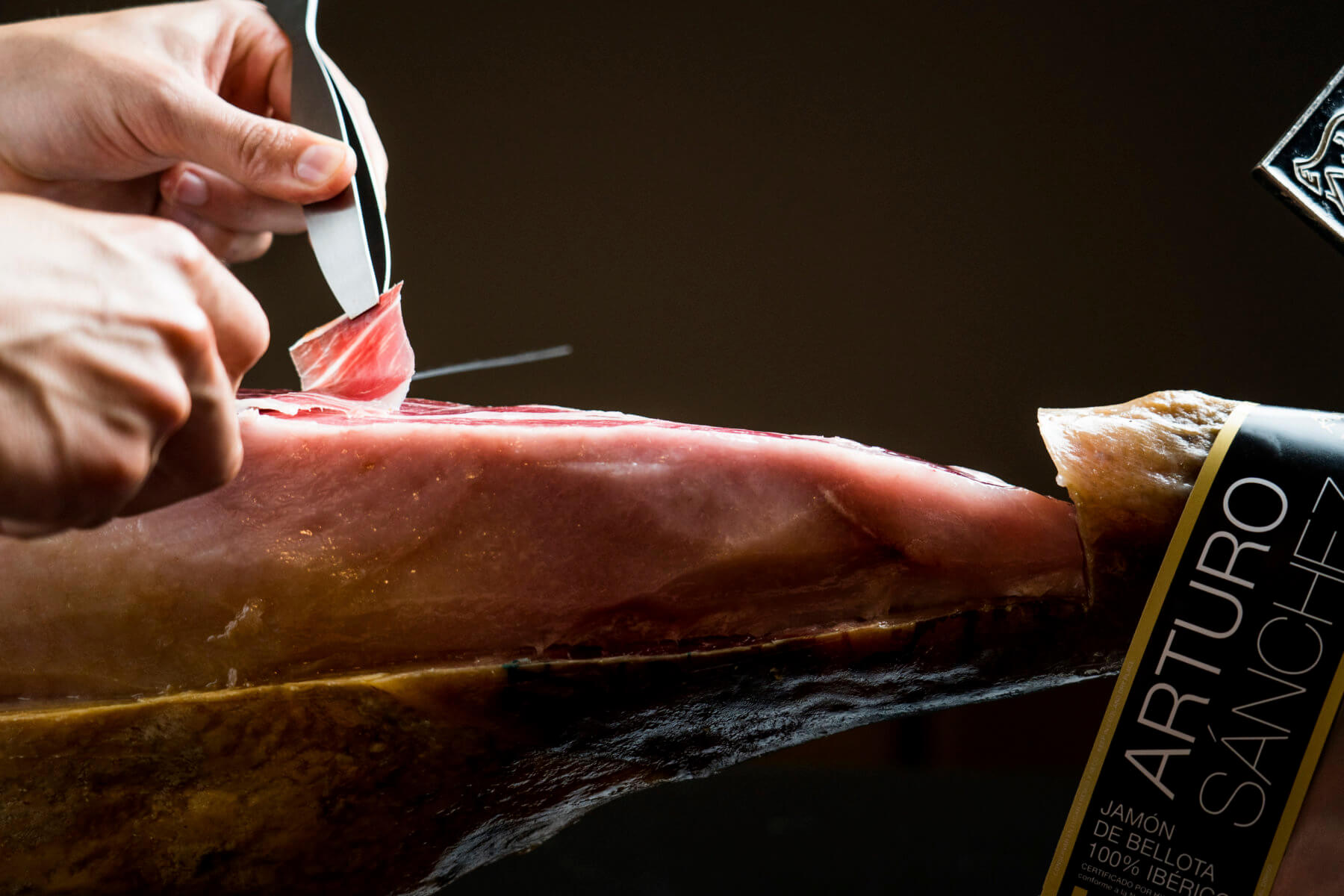A single word holds the key to the magic to so much of what we understand about the world of taste and flavour today – Umami. But what is this famous fifth taste, where do we find it, and why is it that we can’t get enough of it?
Umami and Iberico Ham, as told by Ricardo Sanchez
In part of our series umami from around the globe, we have the pleasure of speaking with Ricardo Sanchez, who is gradually taking over the family business from his father Arturo. The term umami is closely related to pure, acorn-fed Iberico Jamon. As a family business, Arturo Sanchez have followed the same traditional methods for generations, refusing to cut corners or expand as so many of their competitors become more industrial. The result is a truly stunning product, a result of time and love throughout the Iberico pigs life and the lengthy curing process. One of the leading authorities on Iberico ham, Ricardo sheds light on what makes their ham so unique.

Hi Ricardo! Could you tell us a bit about the connection between umami and Jamon Iberico, and what we’re looking for in terms of flavour and quality?
Umami is naturally present in most cured meats, such as ham. The protein in the pork meat is responsible for this, which is degraded by the action of proteolytic enzymes and thus transformed into amino acids and glutamate, the substance responsible for the umami taste.
Umami stimulates salivation, remains in the mouth for a long time, reduces the taste of bitter flavours and enhances the sweetness, all of which produce an extremely pleasant sensation.
This flavour can be more or less intense, depending on the curing time of the hams and the maximum and minimum temperatures to which they have been exposed, among many other factors. The pieces that offer a perfect curing process will be the ones with the most pronounced concentration of umami. At Arturo Sánchez we do not use clocks or calendars in the curing of our Jamons. We observe every detail and treat each piece one by one, until we find the moment when they have the perfect curing point.
Thanks to the knowledge acquired by our ancestors in creating our 100% acorn-fed Jamon Iberico, we can confirm they are gorgeously rich in umami. They are the “pure essence of exquisiteness”, the name by which this fifth flavour is known.
Could you tell us the story of Arturo Sanchez and the history of the family.
The story of the family begins in the late 19th century, when my great grandfather began trading dry meat around the area of Guijuelo, which is near the Candelario mountain range. Later he established himself in Campillo, a very small village close to Guijuelo, and then grandfather established the company in 1950. My grandfather was a person with a lot of knowledge about the production, making hams and sausages like chorizo. Later on it was my father Arturo who went on to transform the Arturo Sanchez company, and he’s been at the helm for the last three decades.
It’s a company with a long history, but the principals are the same: natural processes, the very best Iberian pigs, and not rushing things. It’s all about letting nature do its thing, to make things as good as possible.

Iberico ham has a very long history in Spain… Can you tell more about the product?
The history of Iberico ham begins here in Spain in the middle of 19 century. Of course, it’s a very ancient breed of Spanish pig, but prior to that Iberico ham was only ever eaten at home, and never sold.
Iberico pigs are only ever born in Spain, and they’re very different from the white ones. They grow up very slowly, and they need a big area of land to feed on. For the ham, it’s also important what they eat: Iberico pigs eat acorns, grass, and all the things which are naturally in the fields. They live mainling in the SouthWest of Spain, part of Extremadura and part of Andalusia.
In the case of Arturo Sanchez, one of the points that makes us different from other producers is that all our pigs live over two years. This allows us to have two “montanera” seasons, which means two periods of eating acorns, so the quality of the meat is much better. Montanera season is between October and February or March, when the country produces acorns. Having two of these seasons makes a huge difference to the meat – the pigs are better and more healthy, and actually an independent study by CSIC-CIAL proved that the meat had higher antioxidant power compared to pigs who’ve only had one season.
And what about the pigs’ quality of life?
It would be more accurate to say that the pigs are sacrificed than slaughtered – because they’re so incredibly precious to us. They live in complete freedom for their whole lives, wandering around our huge open land. We keep check on them, but they have freedom to move wherever they want.
What’s the process of ham making?
We add a very low quantity of salt to the meat. After about two weeks in the salt, depending on the weight of the ham, we clean it and put it in cellars on the first floor for some time, and then we put in the cellars for more than three years. It’s a completely manual process – we put each piece of meat there hand by hand, and we open and close the windows every day throughout the year, depending on the weather outside, to maintain the maturing process.

What is the secret to really good ham?
There are two secrets. The first one is to have the best pigs possible. If you don’t have a good pig, it’s impossible to have a good ham. The second one is to have patience, I mean, to take care of these hams each day for more than 4 years, you have to know a lot about weather and to know a lot about ham and to really understand the different seasons, because ham made in summer is totally different to that made in winter. This knowledge and patience is what makes the big difference between us and other producers, between artisan and industrial products. Industrial ones put hams in industrial cellars, set up the computer program and that’s all. So the two things that matter are basically pigs and patience.
For a consumer, how to know what is a good ham and not good?
If you see the whole leg for example, you have to see about the state of the ham, the more thinner and stylized the leg is, the more pure 100% iberian breed it has.
After that, you have to see about the fat, it has not to be perfect, it has to be some irregularity, you know it when you touch it. Then, when you have ham in your plate, you have to see the color of the ham, it has to be more red, and the fat to be a bit pink. When you have fat on your fingers, it has to be like olive oil when you touch it. When you see all these features, it means that the pig ate a lot of acorns. Our hams have more than 60% of oil acid, it’s like olive oil. Some people say the pigs are like olive trees.
You have mentioned the health benefits of ham. Can you tell us more about it?
We demonstrate that hams with double montanera season have double the antioxidant properties. Apart from that, some studies show the benefit of a good quality ham versus an industrial one for heart and cholesterol. But most of all I think that ham makes people happy, and that’s what it’s about more than being a health product – it has good umami flavor, and when you put it in your mouth you feel it’s perfect.

Tell us more about pairing ham with drinks.
The best pairing for ham is white wine. I would recommend sherry, perhaps a Manzanilla or Fino. Also bubbles – Champagne is a wonderful pairing, because it cleans the palate and removes the oiliness. I’m not a sake expert, but what we’ve discovered is that some sakes, especially the fresh ones, balance the flavors and clean the pallet very well too.
How can you continue to grow the business sustainably?
For us this depends on the pigs. We grow the pigs only for ourselves. I think we can expand our production 2-3% each year, no more, because it requires good terrain with space for the animals, and also it’s a very long process and difficult process so there’s a limit to what we can do. We don’t want to grow the farm, we want to make the production we have better and better and better. When you’re operating on too big a scale, it’s impossible to make all of them the best. Essentially, we always try to achieve the same quality as my grandfather did, and I want to teach my sons so they can carry on the family business in the same way.

